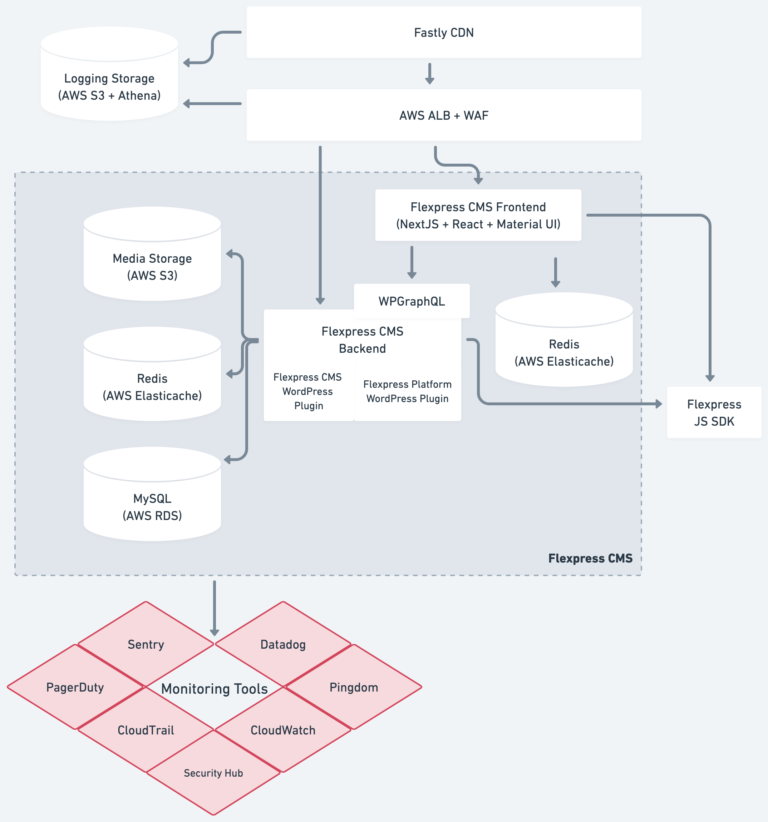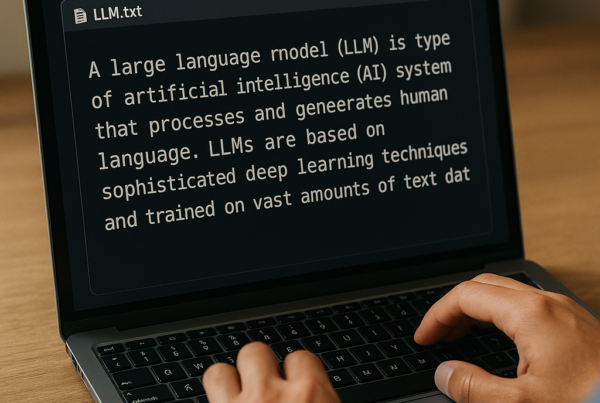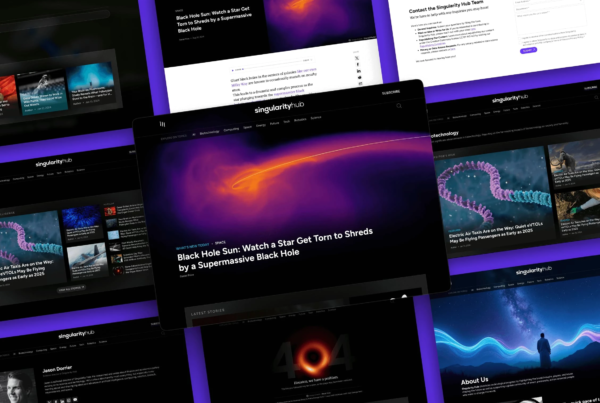One of the largest advantages of Flexpress is the flexibility and usability of its extensible architecture for Content, Ads, Affiliate, and more.

Flexpress is a unique solution: we offer both value-driving components out of the box, as well as a extensible architecture for any high-traffic website to build domain-specific products on top of a lightning-fast user experience.
Said differently: Flexpress handles baseline technical operations for online publishing so publishers’ internal technical teams can focus on business-specific products and integrations with clear ROI.
Why Extensible Architecture Matters
In addition to a growth-minded feature set, data hosting options, and a headless React frontend, Flexpress offers an infinitely extensible architecture for businesses with dedicated tech resourcing.
This allows website owners to relinquish concern about maintaining baseline tech operations and instead cleanly and clearly focus on the content and other products unique to their business.
For larger publishers that means less noise and more targeted development on projects like technical consolidation for new acquisitions, domain-specific partnerships and tools, and unique widgets that improve audience behavior metrics for their particular readership.
How Flexpress Collaborates with Publisher Teams Using Extensible Architecture
Flexpress’s designed content management system workflows have been established to grant autonomy to external engineers and contributors while preserving the stability due to Flexpress’s rock-solid foundation. Find below an overview of the architecture, each team’s ownership of development tasks, and the workflow for reporting bugs, requesting features, and proposing code changes to the Flexpress content repository.
Please also feel free to reach out Flexpress Support via email (hello@flexpress.ai) or the Help Desk to learn more.
Extensible Architecture Overview

Publisher-side engineers are given access to site-specific repositories in order to make frontend and business-specific backend changes. With this architecture, site-specific changes can be released in accordance with each publisher’s specific timelines and approval processes.
Each domain that fully integrates with Flexpress (including the headless backend and DevOps management) has two relevant repositories: the backend plugin and the headless frontend. In addition, enterprise clients may have access to an additional backend plugin repository that impacts more than one domain across their business (commonly referred to as an “organization” repository).
On occasion, a publisher’s technical team member has an idea to improve the core Flexpress codebase. We welcome such suggestions to the Flexpress-content repository and ask they be submitted to Flexpress for review and approval. It is recommended that contributors propose these changes to Flexpress before beginning development work to obtain preliminary concept approval.
Approved changes will be released by Flexpress according to their internal procedures, with or without prior notice to the original contributor. Release timing exceptions may be made for publisher contributions that have external dependencies if communicated to Flexpress in advance.
Flexpress team provides ongoing support to client-side teams at regular intervals, including cross-team project management, success planning, business reviews, best practices presentations, user education and training, and other regular check-ins.
Code Accountability For Extensible Architecture
High-traffic site owners have the autonomy to pursue their own changes, feature additions, and bug fixes. In addition, publishers with Premium Support also have dedicated engineering support hours, which can be used to ask Flexpress to troubleshoot integrations, add new fields or blocks, or make elements of the offering configurable for client-side replacement.
External engineers and Flexpress engineers have ownership of different aspects of site maintenance as follows:
Non-Flexpress engineers tend to work on:
- Site-specific frontend changes or redesigns
- Site-specific block creation
- Site-specific bugs
- Site-specific scripts
- Ads integration with non-Flexpress ad providers
- Google Tag Manager changes (excluding consent management changes when CMP relationship is managed by Flexpress)
- Third-party integrations, including Google Analytics
- Updating the latest Flexpress Content versions on their own timelines, at the domain level
Flexpress engineers are responsible for:
- Platform-wide new blocks, features, and improvements
- Platform-wide bug resolution
- Integrations with other Flexpress products, including Flexpress Ads and Flexpress Affiliate
- CMP changes when Flexpress handles consent management
- Updates and versioning for key required plugins like Yoast
- Accepting or rejecting all proposed changes to Flexpress-content repo made by external engineers
- For DevOps clients: CDN-level changes
Creating and managing pull requests
To maintain an efficient and streamlined pull request (PR) workflow for Flexpress Content core, we have established a set of guidelines for creating and managing PRs. For the latest version of these guidelines, please visit our Flexpress (formerly organic.ly) documentation site.




